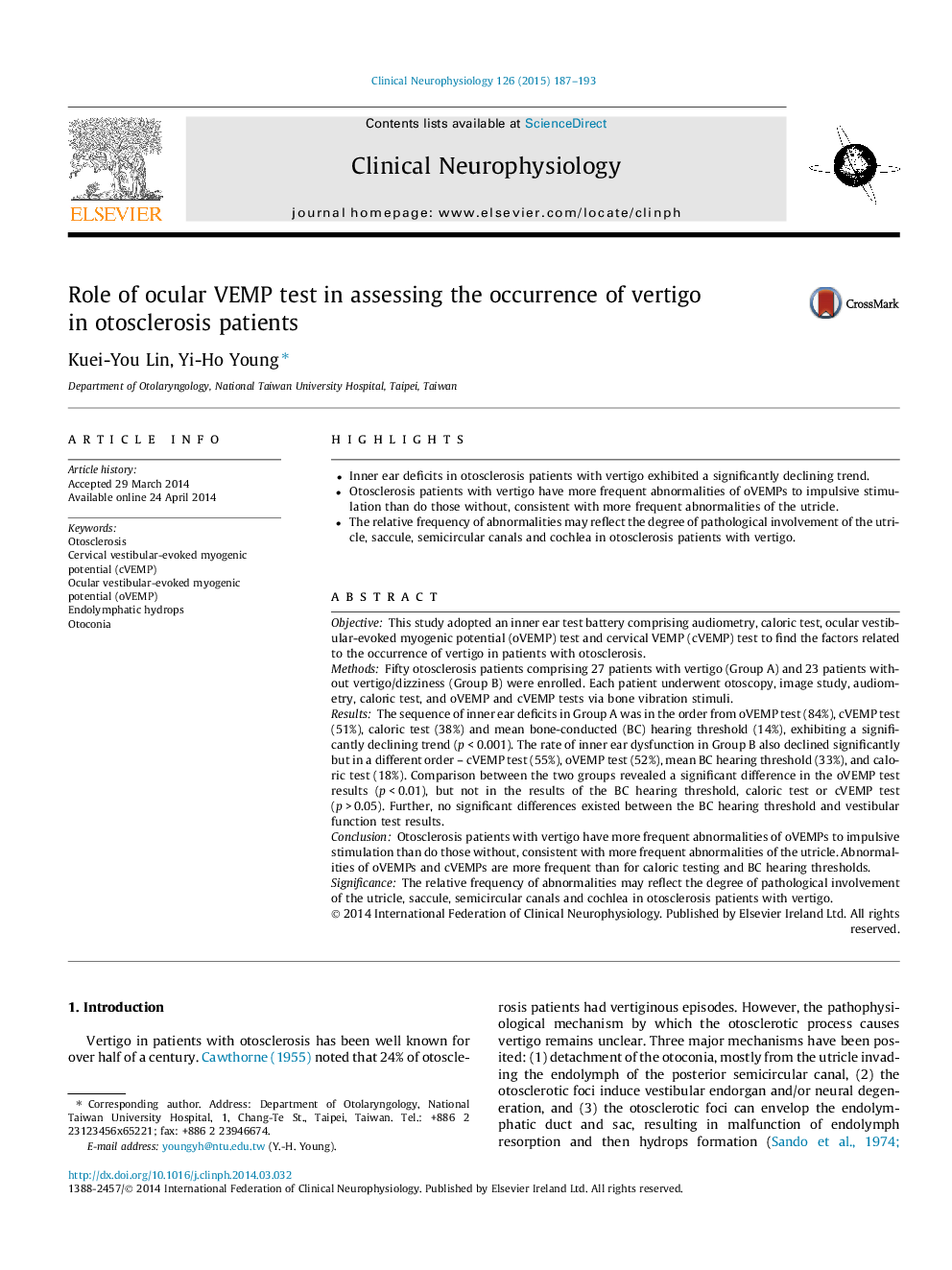| کد مقاله | کد نشریه | سال انتشار | مقاله انگلیسی | نسخه تمام متن |
|---|---|---|---|---|
| 3043226 | 1184974 | 2015 | 7 صفحه PDF | دانلود رایگان |

• Inner ear deficits in otosclerosis patients with vertigo exhibited a significantly declining trend.
• Otosclerosis patients with vertigo have more frequent abnormalities of oVEMPs to impulsive stimulation than do those without, consistent with more frequent abnormalities of the utricle.
• The relative frequency of abnormalities may reflect the degree of pathological involvement of the utricle, saccule, semicircular canals and cochlea in otosclerosis patients with vertigo.
ObjectiveThis study adopted an inner ear test battery comprising audiometry, caloric test, ocular vestibular-evoked myogenic potential (oVEMP) test and cervical VEMP (cVEMP) test to find the factors related to the occurrence of vertigo in patients with otosclerosis.MethodsFifty otosclerosis patients comprising 27 patients with vertigo (Group A) and 23 patients without vertigo/dizziness (Group B) were enrolled. Each patient underwent otoscopy, image study, audiometry, caloric test, and oVEMP and cVEMP tests via bone vibration stimuli.ResultsThe sequence of inner ear deficits in Group A was in the order from oVEMP test (84%), cVEMP test (51%), caloric test (38%) and mean bone-conducted (BC) hearing threshold (14%), exhibiting a significantly declining trend (p < 0.001). The rate of inner ear dysfunction in Group B also declined significantly but in a different order – cVEMP test (55%), oVEMP test (52%), mean BC hearing threshold (33%), and caloric test (18%). Comparison between the two groups revealed a significant difference in the oVEMP test results (p < 0.01), but not in the results of the BC hearing threshold, caloric test or cVEMP test (p > 0.05). Further, no significant differences existed between the BC hearing threshold and vestibular function test results.ConclusionOtosclerosis patients with vertigo have more frequent abnormalities of oVEMPs to impulsive stimulation than do those without, consistent with more frequent abnormalities of the utricle. Abnormalities of oVEMPs and cVEMPs are more frequent than for caloric testing and BC hearing thresholds.SignificanceThe relative frequency of abnormalities may reflect the degree of pathological involvement of the utricle, saccule, semicircular canals and cochlea in otosclerosis patients with vertigo.
Journal: Clinical Neurophysiology - Volume 126, Issue 1, January 2015, Pages 187–193